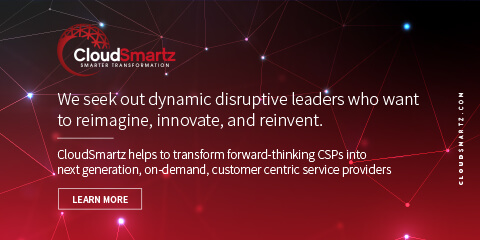Advancing 5G Services to Reduce Churn Rate
By: George Bolt

The role of Machine Learning and the Internet of Things
Machine Learning (ML) ensures a quality 5G service by utilizing unsupervised modelling in Internet of Things (IoT) technology. Currently, IoT devices are put under stress due to their inbuilt fault levels being exceeded. This causes disruption among interconnected devices as the entire system attempts to compensate, which impacts performance levels. ML solves this by allowing the device to learn normal activity and recognize network elements moving outside of this for broader and faster adaptability to new environments. ML also allows for a more rapid response to work maintenance, identifying and solving issues within the system before subscribers can even be impacted. This is especially valuable in data rich environments where issues are difficult to manually define, and data is too vast to plausibly manually analyze.
CloudSmartz Whitepapers
- Redefining Telecom
- OpenKilda: Lessons Learned
- Telecom in the Age of the Cloud
- DevOps-as-a-Service
- Real-Time IT for CSPs
About CloudSmartz
CloudSmartz is a challenger in the industry for Lifecycle Service and Customer Orchestration, enabling digital transformation for Communications Service Providers (CSPs) around the
world. We are considered an orchestrator-of-orchestrators – we act as an innovation enabler on the service-provider and customer-facing layer, which helps CSPs to operationalize
and monetize their back-end technology infrastructure investments through our innovative microservice architecture. Our mission is to help transform forward-thinking CSPs into
next-generation, on-demand, customer-centric service providers. We seek out dynamic disruptive leaders who want to reimagine, innovate, and reinvent. Gartner has recently named
CloudSmartz as a 2018 Cool Vendor In Communications Service Provider Business Operations – and 451 Research shares that our solutions bridge the gap between the carrier's new
virtualized SDN/NFV network and the carrier's OSS/BSS systems so the carrier can move from deploying a network to deploying services and generating revenue. Our global offices
around the worlds are proud to have been recently awarded, “Most Innovative Technology Provider” & “Innovations in Aggregation” by Pipeline Magazine – and as of 2019, Inc. 5000
named CloudSmartz one of America's Fastest-Growing Privately-Held Companies for Four Consecutive Years in a row (2016, 2017, 2018, 2019).
The enhancement that ML brings to the fault tolerance of IoT is not only important around the home for the convenience of commercial users but also crucial in emergency scenarios for maintaining communication pathways. For example, consider the critical nature of fault tolerance in the development of the System for eDetecting and forecasting Natural Disasters based on IoT (SENDI). Here, ML enhanced and collaborated with IoT and wireless sensor networks to predict oncoming natural disasters, anticipate a failure in communication and provide a line for emergency broadcasting.
The development of these revolutionary systems in answer to pressing real-world issues is valuable to our society on a global scale. Furthermore, ML is proving highly effective in its role as a catalyst in the progression of IoT technology. The fact that such technology can have an impact far beyond the domestic scope is telling of its scale, which explains why operators are currently struggling to harness it for customer use. However, these scenarios showcase the importance of ML technologies in aiding this. They demonstrate its ability to effectively improve IoT performance no matter the extent, whether it be improving CX or implementing safety measures.
Digital Twins: how does ML contribute?
Other answers to sub-optimal CX and rising churn rates include the analysis of subscribers using Digital Twin technology. Data is gathered from various sources, including subscriber devices, network logs, customer relationship management (CRM) systems and payment and billing records, to build a digital file on how customers use the network. The data is then analyzed to provide insight into the type of service they might prefer or be looking for. By monitoring customer usage, predictions can be made as to those likely to unsubscribe, allowing operators to put retention measures in place to deter them from doing so. In addition, new subscribers can be scouted via cross-selling and uplifting. A company can profile their existing subscribers to identify who is benefiting the most from their services and hence identify potential subscribers who match the same behavior to offer them services they would find beneficial.




















